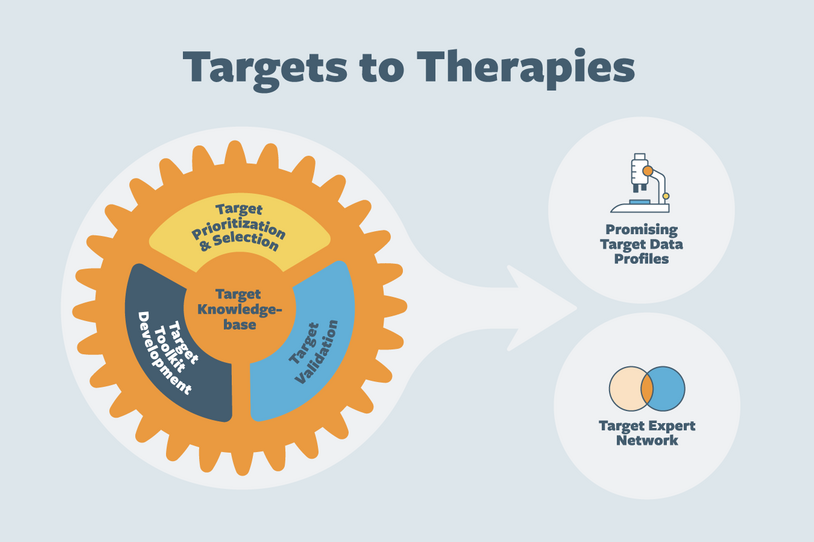
The Michael J. Fox Foundation for Parkinson’s Research (MJFF) convened global meetings of experts through its Targets to Therapies initiative, initiating the process of studying aspects of Parkinson’s disease (PD) biology that, with additional research, could be homed in on by new drugs.
The program launched in 2024, surveying scientists all over the world about the most promising targets for PD therapies that hadn’t gotten a lot of attention. The surveys returned more than 280 targets; MJFF leveraged experts worldwide to narrow that list.
In March 2025, MJFF convened a series of town halls on five of the most promising targets, with an additional seven in the immediate queue for further exploration. The point of the program is to gather information on these underexplored targets and make that information publicly available to attract the interest of drugmakers — a strategy called “de-risking” that can speed development of new treatments.
In short, MJFF is supporting a tranche of research to characterize underexplored biological pathways for improving the lives of people with Parkinson’s.
What are Drug Targets?
Therapies typically target a single biological mechanism, such as a protein or gene. In Parkinson’s disease, there are a number of well-known examples, like alpha synuclein, the GBA gene and the LRRK2 kinase. MJFF funds a significant amount of work on therapies that affect the way these biological mechanisms function. However, there are hundreds of more mechanisms that scientists suspect could impact PD, either by improving symptoms or modifying the disease itself.
That’s why MJFF went to the research community with an open-ended question: Which druggable targets in Parkinson’s disease do you think deserve more attention?
The question generated more than 280 targets, leading to a year-long effort to refine the list and find the most promising targets for further study. MJFF and consulted experts will continue to add new targets for exploration, but the list starts with five of the most promising (and an additional seven in the immediate pipeline).
Which Targets Will the Initiative Explore First?
The five initial targets beginning validation in 2025 span diverse pathways and stages in the discovery pipeline:
TMEM175. When TMEM175 (a protein) doesn’t work correctly, it can impact cell’s waste disposal systems, leading to buildup of toxic substances in neurons—a hallmark of neurodegenerative diseases like PD.
ATP13A2. Mutations in ATP13A2 are a rare cause of young-onset Parkinson’s disease. Studying this gene can help researchers identify common pathways or vulnerabilities that are shared between rare and more common forms of PD, offering new therapeutic strategies that could benefit a larger group of patients.
MCOLN1/TRPML1. Activating the protein TRPML1 (also called MCOLN1) may help with clearance of alpha-synuclein, the protein that is linked to Parkinson’s when it misfolds.
OGA. Inhibiting the OGA protein may prevent the degeneration of dopamine neurons, a key contributor to Parkinson’s symptoms.
NOD2. Blocking interaction between the NOD2 protein and alpha-synuclein may reduce neuroinflammation (swelling in neurons) and protect dopamine neurons, which are crucial in Parkinson’s.
How Will the Program Speed Drug Development?
Since the Foundation’s earliest days, it’s set out to make as many strategic investments as possible to help drug developers validate new findings in Parkinson’s biology and enable new therapeutic approaches. Over the years, MJFF has developed a sophisticated approach in providing researchers and biopharma with the funding, tools and collaborative partnerships they need. This de-risking strategy has already contributed to major steps forward in catalyzing significant investments in the de-risking of leading genes and their proteins including LRRK2 and alpha-synuclein. Through the Foundation’s initiatives, major advances like establishing a collaborative network of labs and industry working on LRRK2 and investing in better defining and measuring the disease through imaging and biomarker tests on alpha synuclein, dozens of therapies are now actively being tested in these pathways, which may lead to slowing or stopping disease progression.
The Targets to Therapies initiative plans to debut a knowledge base with all of the information gathered through the program. This knowledge base can inform drug development efforts, reducing the initial investment (and risk) of developing a drug that homes in on one of these targets.
“The Michael J. Fox Foundation exists to increase the number of available treatments for people and families with Parkinson’s. Expanding the number of well-characterized, druggable targets is an important step in that direction," said Shalini Padmanabhan, PhD, senior vice president of discovery and translational research at MJFF.
“This program gives us a field-wide view of emerging targets so that we can prioritize those that give us the best chance at new therapies.”